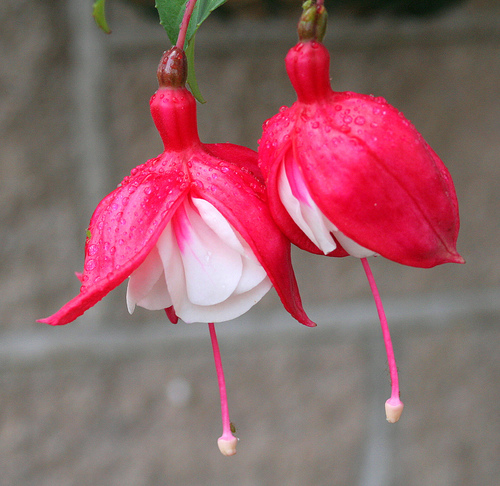Drew Logan

Photo: foxypar4
I encountered Molly Peacock for the first time years ago on a bus in downtown Manhattan. She was driving. No! No! Please do not think she was driving the bus. There was a placard on the interior wall of the bus above the seats where they normally put advertising. It had a poem on it. I think something by my good friend Walt Whitman. Something you would not expect. Not that you would expect to find a poem on a placard on the interior wall of the bus above the seats.
An organization called Poetry in Motion publicly claimed responsibility for this act. As it turned out, Molly Peacock was one of the driving forces behind Poetry in Motion. I think Portland, Oregon might be doing the same thing. Anyway, it is a well loved arts program that she helped start.
She wrote this book which has in it some really excellent poetry and some very significant poetry. It is titled Second Blush and is supposed to be full of sonnets. Frankly, I am going to have to go back and look to see if they really are sonnets. The author’s voice took all of my attention. Molly Peacock is like any really good poet, a teacher. There are two important themes in this book. You must love another if you want to grow spiritually. Flaws are wonderful variations on the song of the universe.
The book is dedicated to Michael Groden who is her husband and lover. He is also a pre-eminent Joyce scholar who has done much to make Ulysses accessible. This is not the only reason to be impressed by him. Throughout the book Molly Peacock expresses her love for her husband, tells us how much he loves her, and lets us know about their love and their oneness. I will let the poetry explain this, but it is the thing that makes this book and their love important information for anyone seeking spiritual growth.
Molly Peacock does a very risky thing in this book – she writes some poems about her cats. There is a glut of bad poetry about cats in the world. This, of course, is not that kind of poetry. After reading her cat poems, I immediately thought of Elliot’s cats and Issa’s cat. Fellini has my admiration for not going quietly into the night. I give my condolences to his mate and was very moved by the “Widow” and “Ghost Cat”.
There are two more poems from the book for which I would like you to be particularly attentive. Please know that I am not just picking out the best. They are all good. These require your focus because they are particularly excellent examples of the two important themes that I have mentioned. Robert Pinsky, a former Poet Laureate of the United States also thinks highly of these two poems. Norton has a wonderful web site, www.poemsoutloud.net where Pinsky picked some poems of other poets to be read aloud with Molly Peacock reciting these two poems in her lush, lyrical poet’s voice.
“Marriage” is the next to last poem in the book and one of those that she recited. The woman talks about the man and how they are really one soul with two strong personalities. She is a part of the source inside him just as he is a part of the source inside her. They can go off and do the career things they do and still be connected at the heart.
“The Flaw” makes a significant comment: “The best thing about a hand-made pattern is the flaw.” In the West, we look for perfect, machine-made things with well-defined boundaries and no flaws. In the East, where the rug in the poem was made, no two rugs are ever exactly the same. The rugs are made by people. They are, from our perspective in the West, flawed. Yet we value them so much more because they are hand-made.
The flaw proves the rug was created by hand. The pattern of the rug and the pattern of our lives are distinctive. Both patterns carry a great deal of information and require the flaws to make the information readable. In the East, they expect flaws, and when the flaws are not there, they go looking for them. There is the story of the Buddhist Monk who spent much time raking the sand in the rock garden of the monastery, and when he was finished, he added one leaf.
I do not believe that any poetry should ever be deconstructed, because it is written to be read aloud by me, rather than parsed. Having said that, I am going to make an exception and proceed with the deconstruction of “First Blush”. This is a poem in the book that has a connection to the title, Second Blush. A blush is a bloom.
“First Blush,” the poem, has an element of intuitive uncertainty. Second Blush, the book, has an element of intuitive certainty. Love is what is blooming. It has bloomed twice. The book is about a bigger, more developed love than the poem. The intuitive certainty of the book requires the intuitive uncertainty of the poem. If you want to work on your spiritual development, then read the entire book from cover to cover and find someone to love this deeply.
The book is published by W.W. Norton (www.nortonpoets.com).
ISBN 978-0-393-06651-7











No comments so far ↓
Nobody has commented yet. Be the first!
Comment